When To Start Sleep Training Your Baby
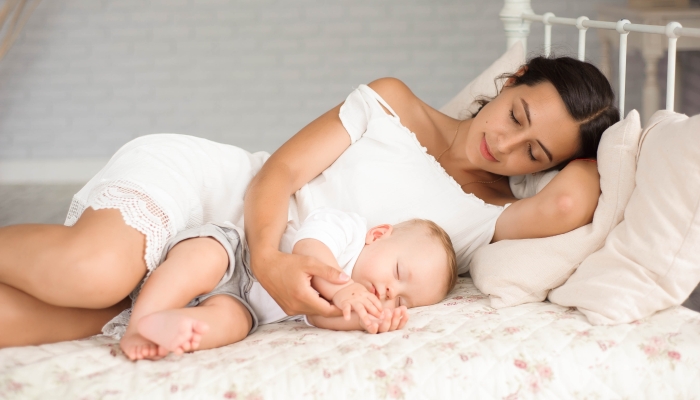
- The recommended age to start sleep training is generally between 4 and 6 months.
- Babies develop self-soothing skills around 4 months, making it an ideal time to introduce sleep training techniques.
- Establishing healthy sleep habits before 4 months, like developing a regular bedtime routine, is also important.
When I heard about sleep training for the first time, I had no idea there were different sleep training methods (including a no-cry approach) or age recommendations. My mom groups only referred to the cry-it-out method and usually made sleep training sound like a simple and flawless solution to sleepless nights.
But there are a lot of factors involved that you need to understand in order to determine whether your little one is a good candidate to begin sleep training.
One of the most important factors is age. Knowing when to start sleep training will ensure your child is developmentally ready. Starting too soon can do more harm than good.
What Is the Best Age to Start Sleep Training?
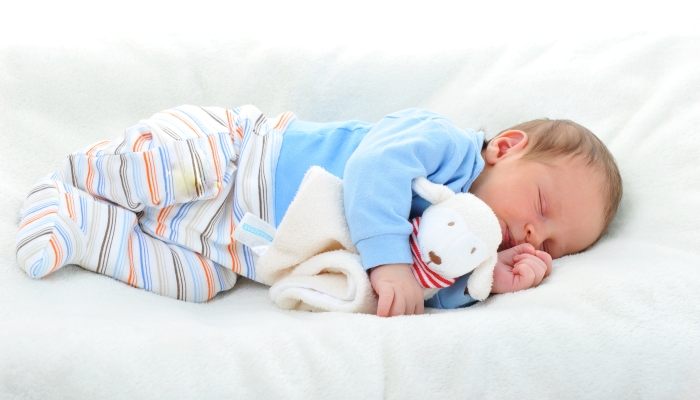
The best time to start sleep training is between 4 and 6 months. Babies are still in their newborn phase before 4 months of age and have different sleep needs than older babies. Not to mention that they’re still adjusting to life outside the womb!
Around 4 months, most babies begin developing skills that help them self-soothe. This could look like:
- Gentle rocking: Some babies find comfort in gently rocking themselves. These rhythmic movements can mimic the sensation they felt in the womb and help them relax and fall asleep. Babies typically develop this only after they’ve learned to crawl.
- Thumb sucking: Many babies naturally discover the soothing power of sucking on their thumb or finger. Sucking is a reflex babies develop even before birth as a means to cope when they’re tired, anxious, or seeking comfort. Some use it as a self-soothing mechanism to self-regulate and lull themselves to sleep.
- Comfort objects: Your baby could also develop an attachment to specific things like blankets, stuffed animals, or a favorite lovey. This usually happens based on a texture, smell, or association with a positive experience. Comfort objects can help babies feel secure and relaxed enough to fall and stay asleep.
Besides the occasional sleep regressions, your baby’s sleep pattern will also start to regulate around this age, and they should be able to sleep for longer stretches, creating the perfect window of opportunity to introduce gentle sleep training methods.
Newborn babies can still benefit from establishing healthy sleep habits, though, even if they are too young to sleep train. For babies younger than 4 months, this includes:
- Developing a consistent bedtime routine.
- Creating a sleep-friendly environment.
- Ensuring they are well-rested with age-appropriate naps.
Creating healthy sleep habits will prepare your little one for any sleep training methods, but remember to always respond to your baby’s needs!
When Is It Too Late to Sleep Train a Baby?
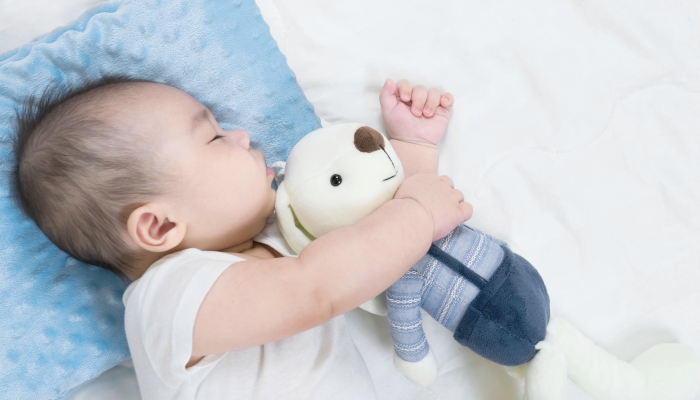
The idea that there is a deadline for sleep training is misleading. It’s never too late to work on your child’s sleep habits.
Regardless of your little one’s age, you can make positive changes to help improve their sleep.
Your approach with an older baby or toddler will be slightly different, but you’ll still get results with consistency and patience.
As babies get older, their sleep schedule and patterns evolve. They may have also developed certain sleep associations or bad sleep habits that interfere with their ability to get a good night’s sleep.
Sleep training older children might involve gradually teaching them to fall asleep independently, addressing specific sleep challenges, and creating new bedtime routines.
When you’re sleep training a toddler or older child, it’s important to identify existing sleep issues and underlying factors contributing to these challenges.
Sleep training is about setting the stage for healthy sleep habits and guiding your little one to falling asleep and staying asleep independently. It’s never too late to teach your child the skills they need to soothe themselves.
Does Your Baby’s Age Affect Sleep Training Success?
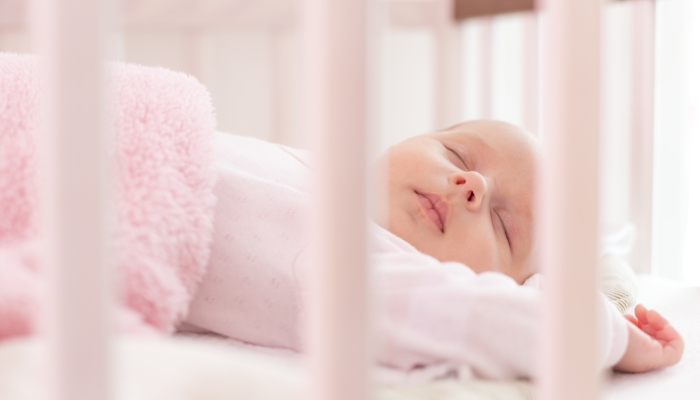
Yes, your baby’s age influences which sleep training technique works best and how successful it will be.
Babies go through developmental stages that impact their sleep patterns. They spend less time in REM (rapid eye movement) sleep than older children and adults. Here’s a rough estimate of how much your infant may sleep:
| Age | Nighttime sleep | Daytime sleep | Total sleep |
| Newborn to 3 months | 8-9 hours | 7-8 hours | 15-17 hours |
| 6 months to 1 year | 10-11 hours | 3-4 hours | 13-15 hours |
| 1.5 years to 2 years | 9-10 hours | 2-3 hours | 11-13 hours |
When it comes to infant sleep training, your child should have developed some kind of self-soothing skills first. Without it, they’ll have a hard time falling asleep independently.
6 Helpful Tips When Starting to Sleep Train Your Baby

It’s normal to feel overwhelmed by the thought of sleep training. You might be unsure about how to get started or what to do to make the process smoother for you and your baby. So, here are 6 helpful sleep training tips:
1. Establish An Age-Appropriate Nap Schedule
Daytime sleep can positively impact your child’s nighttime sleep. Kids who rest during the day are typically in a better mood, have enhanced concentration, and are less likely to become overtired or struggle to fall asleep at bedtime.
You should pay attention to your baby’s sleep cues during the day and establish a consistent nap schedule that suits their age.
However, not all children will want to nap during the day. Most toddlers drop their daytime naps between the ages of 3 and 5. You should never force your little one to nap if they don’t want to. Incorporate quiet time and relaxing routines instead.
2. Establish A Consistent Bedtime Routine
A predictable evening routine will help your baby prepare for sleep. You can include activities like a warm bath, reading a bedtime story, or singing a lullaby. It’s important to choose one or two activities you can do consistently.
Here’s a simple bedtime routine example to consider when you being to sleep train:
- Have dinner together as a family.
- Quiet play for 10 to 15 minutes.
- Take a warm bath.
- Read a bedtime story while in bed.
- Turn the nightlight on and switch the main lights off.
You don’t have to start dinner at the same time every night. The important part is sticking to the routine that follows the first activity. It’s all about creating a calming and predictable pattern that your baby will start associating with falling asleep.
3. Create A Sleep-Friendly Environment
You should ensure your baby’s sleep space is comfortable and ideal for sleep.
While every child differs, most prefer a sleeping environment that’s dark and at a comfortable temperature. It’s also a good idea to ensure there aren’t external noises that could bother them.
The sleep environment you create should ultimately reflect your child’s needs. If your child does enjoy sleeping with noise, you can experiment with gentle and soothing sounds. If they prefer the lights on, you could add a dim night light.
With the right environment, sleep training will be easier. Comfort can help your little one settle faster and reduce sleep disruptions.
4. Be Consistent With Your Approach
Besides settling into a routine, you should be consistent with the method you choose to sleep train. Consistency is key for babies to understand expectations around sleep. Avoid regularly switching between methods. This can confuse your child!
Here are some common sleep training methods:
- Chair Method: Sit a chair next to your baby’s crib during bedtime and gradually move it farther away over several nights until your little one feels secure to fall asleep independently.
- Pick-Up/Put-Down Method: Pick your baby up whenever they cry, but put them down once they’ve calmed down. Repeat the process until your baby falls asleep on their own.
- Fading Method: Follow your baby’s sleepy time cues and gradually reduce the intervention needed to help your little one fall asleep.
5. Observe Your Baby’s Sleep Cues
You should always pay attention to your child’s sleepy signs so you can put them to bed when they’re drowsy but still awake. Some babies rub their eyes, become fussy, or repeatedly yawn.
When you act on these cues, you can help your baby learn how to self-soothe and fall asleep independently while still practicing responsive settling.
You don’t need to walk away or let your little one cry it out. Responsive settling or a gentle sleep training method involves being present and responsive to your baby’s needs while encouraging them to develop self-soothing skills.
When your baby is tired, put them to bed and try gently patting or soothing them while they’re in their crib, gradually reducing the level of intervention.
6. Be Patient and Expect Setbacks
Your child might cry, resist, or struggle to settle down initially. I promise they’re not doing it to make your life miserable! They’re simply learning a new skill, just like riding a bike.
You need to be patient and prepare for setbacks. Your little one won’t figure out how to sleep independently within a day and needs time to adjust, feel secure, and build the habit. Sleep training is a process, and it’s normal to experience ups and downs.
Sleep training when your baby is teething, hitting new developmental milestones, or going through a sleep regression can be challenging too. They could be more wakeful or fussy or even change their sleep patterns.
Understanding that these disruptions happen can help you get through them with patience.
Be patient with your baby and yourself. It will take a few nights for new sleep habits to form. You need to stay consistent and positive.
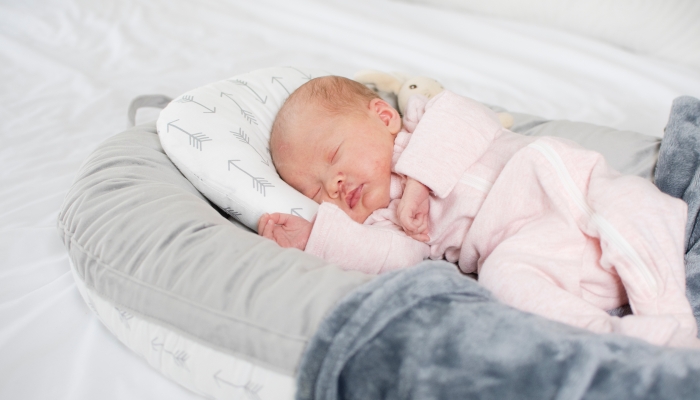
FAQs
Does sleep training work for breastfed babies?
A 2012 study published in the Journal of Pediatrics and Child Health titled Breastfeeding and Infant Sleep Patterns examined the sleep patterns of 4,507 infants aged 6 months to determine if breastfed babies were more likely to wake at night.
The study found that infants breastfeeding at bedtime were 66% more likely to wake up during the night and 72% more likely to have trouble sleeping alone.
While these results might indicate that sleep training wouldn’t work, it’s all the more reason to get your breastfed baby sleep trained.
Breastfed babies can learn good sleep habits, although the exact sleep training method you use will look a little different than it would for a formula-fed baby.
Because breast milk tends to digest faster than formula, your little one might also not be able to fall asleep and stay asleep for the entire night, but once they learn to self-soothe, you’ll all wake up with less sleep deprivation the next morning!
Can babies sleep through the night without formal sleep training?
You’re not doomed to waking in the middle of the night forever if you decide to not sleep train your baby. Children with healthy sleep habits can develop independent sleep skills without being sleep trained.
Every child is unique, and their sleep patterns and abilities vary. Some can transition to sleeping through the night easily, while others need gentle guidance and support.
References
Galbally, M., Lewis, A. J., McEgan, K., Scalzo, K., & Islam, F. A. (2013). Breastfeeding and infant sleep patterns: An australian population study. Journal of Paediatrics and Child Health, 49(2). https://doi.org/10.1111/jpc.12089
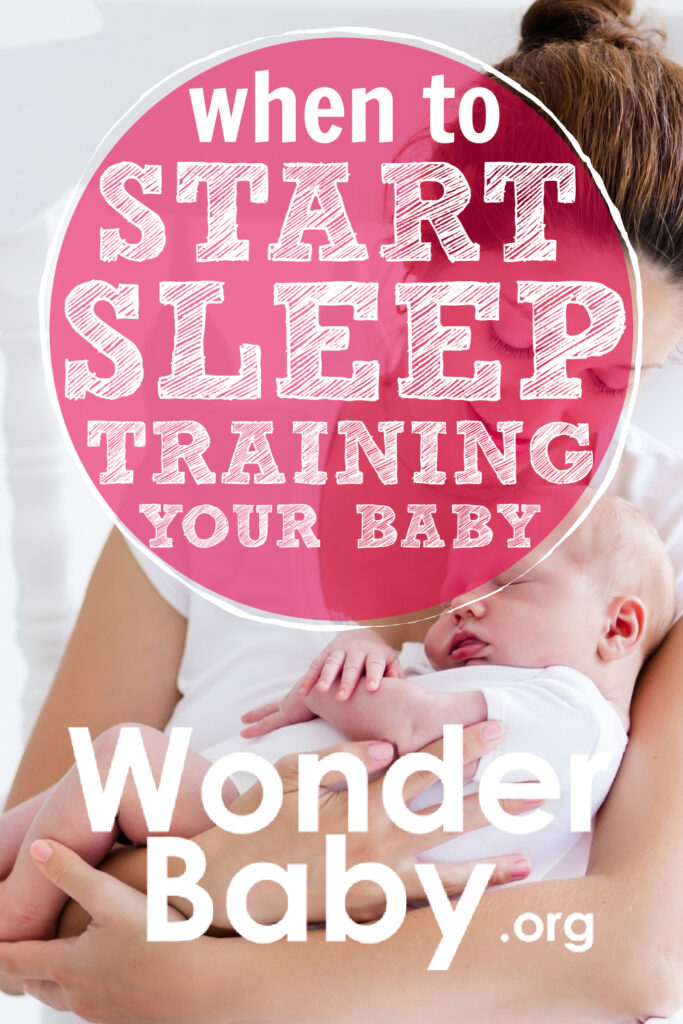
Related Posts
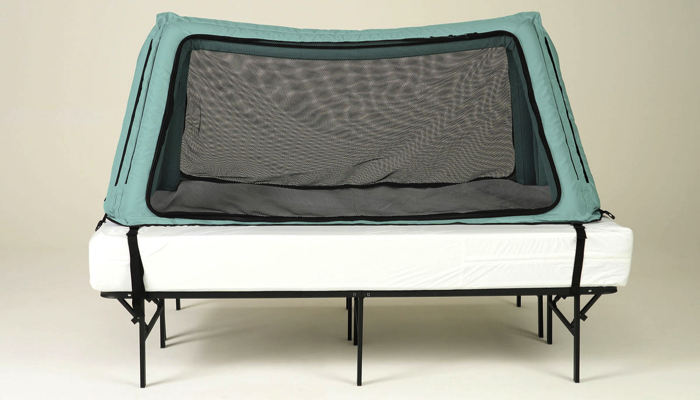
Sleep, Special Needs
Safe Place Bedding Travel Bed Review
Traveling with a special needs child can be stressful! Having a safe, durable, and easy to use travel bed can make traveling so much easier!
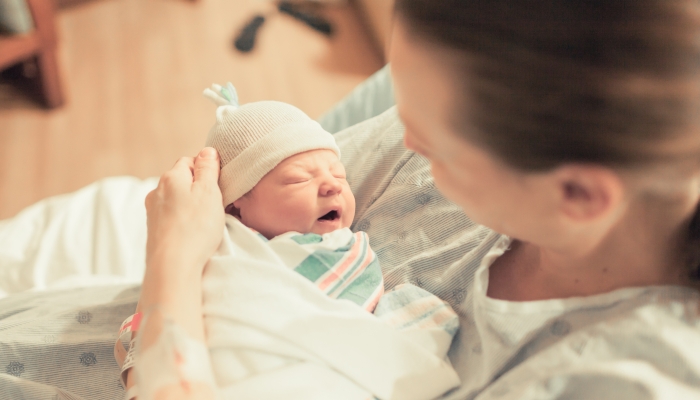
Sleep, Special Needs
Sleep Regimen for Premature Babies: Special Considerations
It can take premature babies much longer than their full-term peers to sleep for long stretches. A preemie sleep schedule may encourage better sleep.
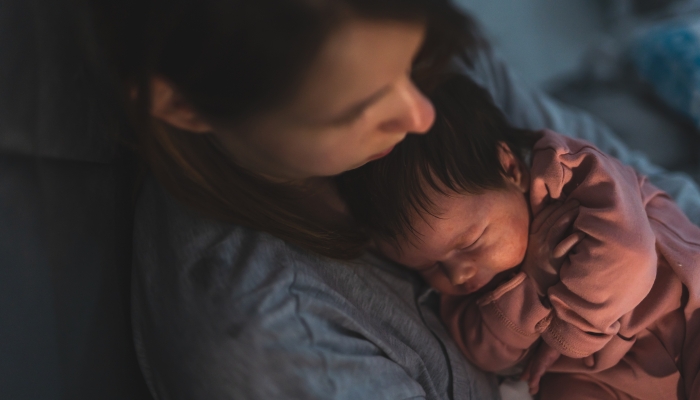
Sleep
Mastering the Bedtime Routine: 3 Tips for a Peaceful Night’s Sleep
From around six weeks, a newborn bedtime routine can help your baby learn the difference between day and night and prepare for a restful night’s sleep.